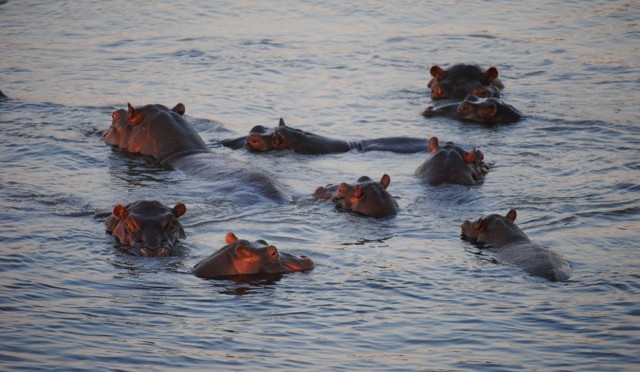After leaving the Caprivi Strip, we headed for one of the highlights of our camping safari: Botswana’s Chobe National Park, a park that boasts one of the largest concentrations of game in Africa and more than fifty thousand elephants.
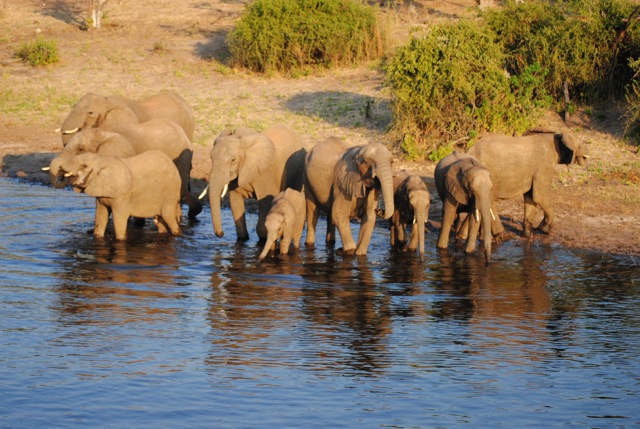
But before we could reach the park, we first had to navigate one final crossing of the Namibia-Botswana. After getting stamped out of Namibia, we drove across the bridge over the Linyanti River, which separates this stretch of the two countries, spotting several elephants on the Botswanan shore as we approached. At the Botswana border post, we first stopped at a foot-and-mouth disease control point, where we disembarked our vehicle to walk through the shallow pool meant to clean our shoes. The control point officer needed to perform additional checks on the vehicle, so our guide suggested that we could just walk ahead to the passport control office, 100 meters up the road, to get our Botswana entry stamps.
The control point officer jerked her head in the direction of an elephant munching on a tree not far from the side of the road – within the confines of the apparently ineffective fence surrounding the border post – and demanded of our guide, “Do you want them to get killed by the elephant?” Having survived the previous night without being trampled to death by elephants and hippos, despite warnings to the contrary, we felt confident enough to approach passport control on foot. The elephant didn’t even deign to look at us as we passed.
Once we were reunited with our guide and our vehicle, we drove across a transit road that spanned the northern section of Chobe National Park to our campsite in Kasane, at the Chobe Safari Lodge. On the drive, we spotted a good number of animals, including a ground hornbill that had a snake in its mouth. All that hornbill wanted to do was eat his snake in peace, but we chased the poor thing until we had properly photographed him and his dinner.
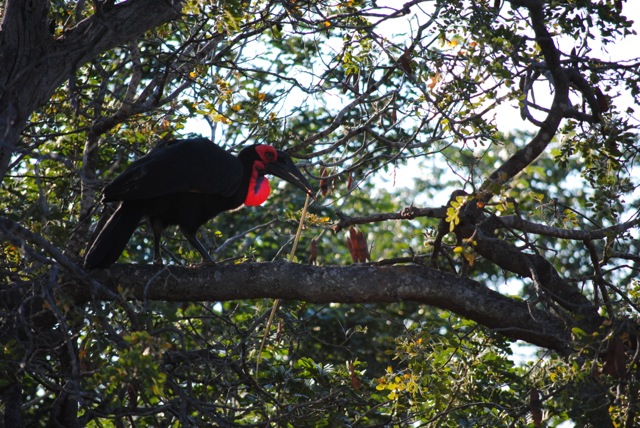
Warthogs1 greeted us outside the reception area as soon as we arrived at the lodge, and monkeys ran along the rafters of the lodge’s thatched roof. On the short walk from the lodge to our campsite, we further encountered baboons and banded mongooses, and a sign warning us about crocodiles.2
The next morning at 6:00 a.m., we met our lodge-appointed guide for a three-hour game drive. We piled into his open safari vehicle, accepted the blankets he was handing out, and set off for the park. He got our hopes up when he thought he spotted wild dogs crossing the road before we had even reached the park’s gate – but, alas, they turned out to just be impalas.
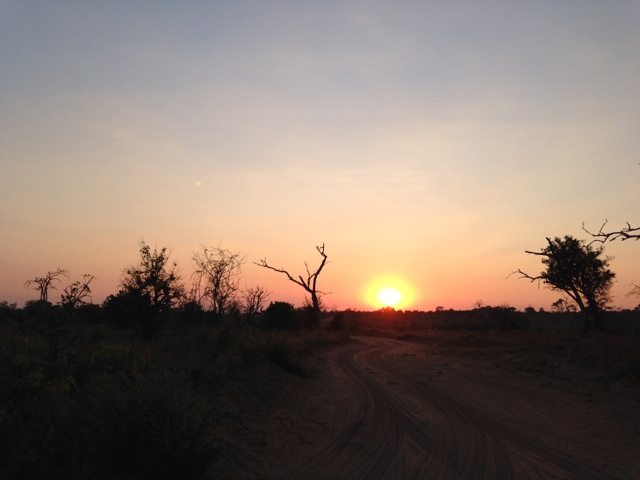
Our failure to see the elusive wild dogs3 aside, we had great success spotting animals. We saw tons of birds (African fish eagles, snake eagles,4 helmeted guinea fowl, white-backed vultures, woodpeckers, and black-shouldered kites), as well as impalas, warthogs,5 giraffes,6 wildebeests, elephants, hippos, and more.
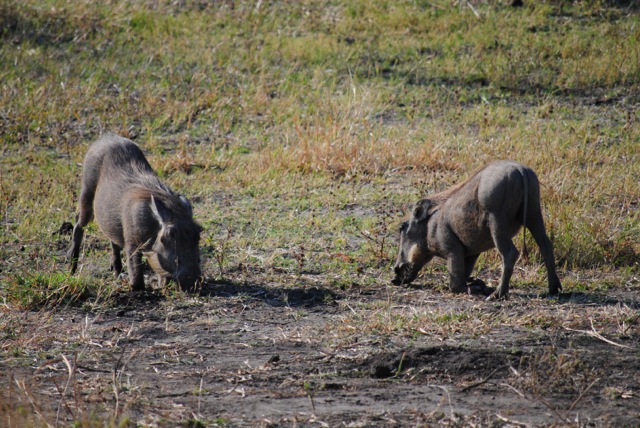
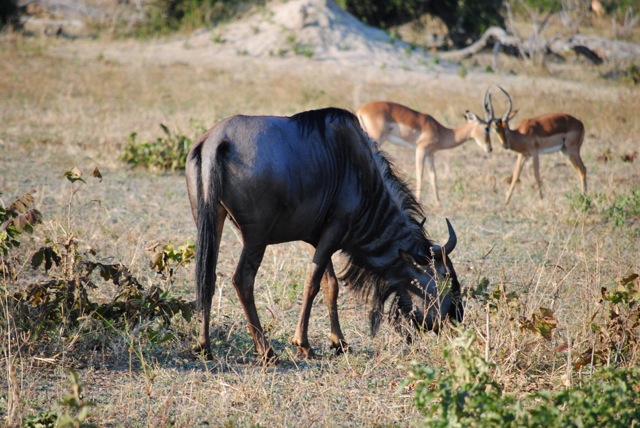
Choosing my favorite animal sighting of the day was too hard, so I narrowed it down to three. First (and most obviously), there were the lions. We saw two adult females with five cubs, and we watched them stalk across the savannah, causing alarm to a group of impalas and a buffalo hiding in a bush.
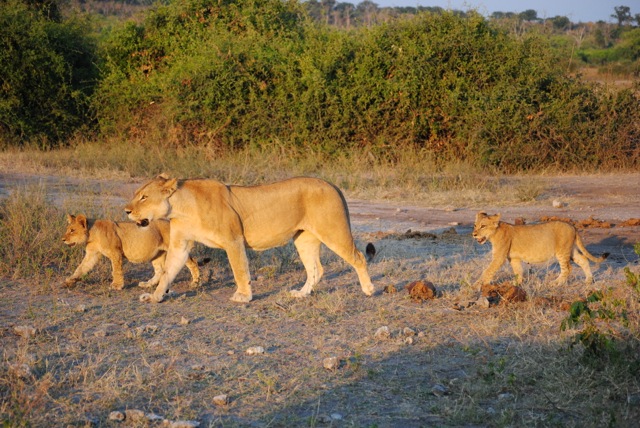
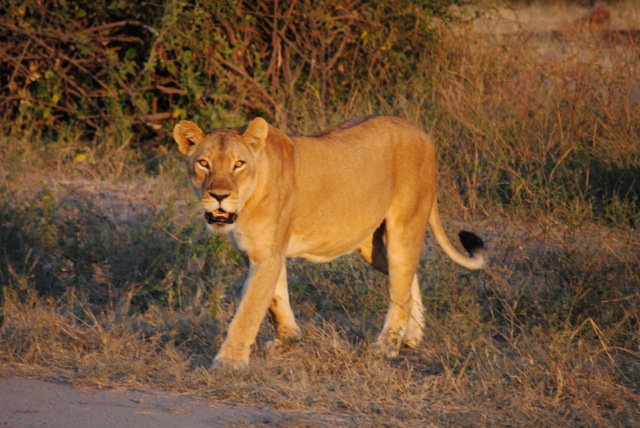
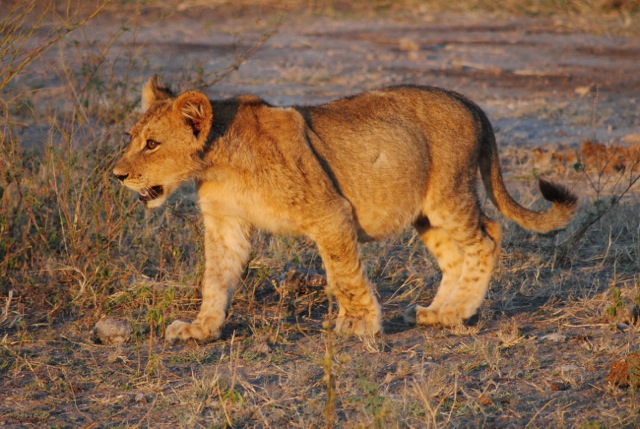
Speaking of buffaloes, my second favorite sighting was the buffaloes. I just love how disgruntled and disheveled they always look. One of these guys had a couple of brightly colored birds riding along on his back, which amused me to no end.
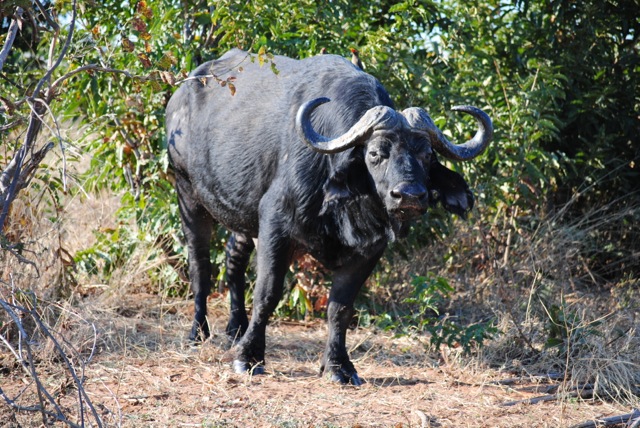
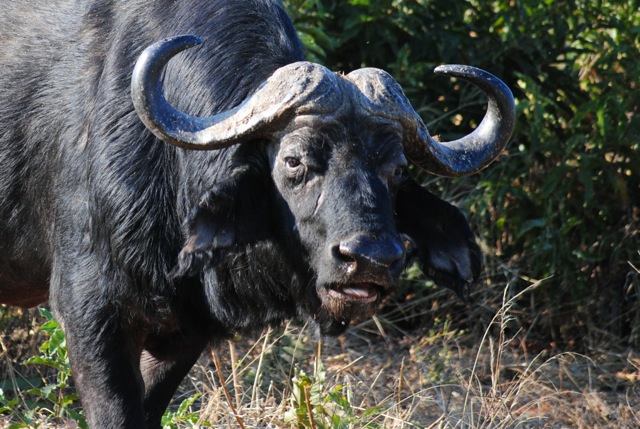
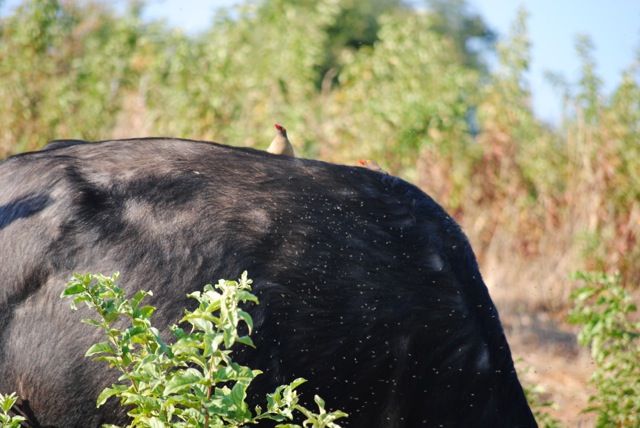
Finally, there was the honey badger. Not only is the honey badger inherently amusing because of the infamous honey badger video, but honey badgers, which are nocturnal, can be difficult to spot during a game drive … and, not to brag, but I spotted him. (In full disclosure, I only saw him because I was being a poor safari participant and not paying attention to our guide’s informative discussion of the African fish eagle.)
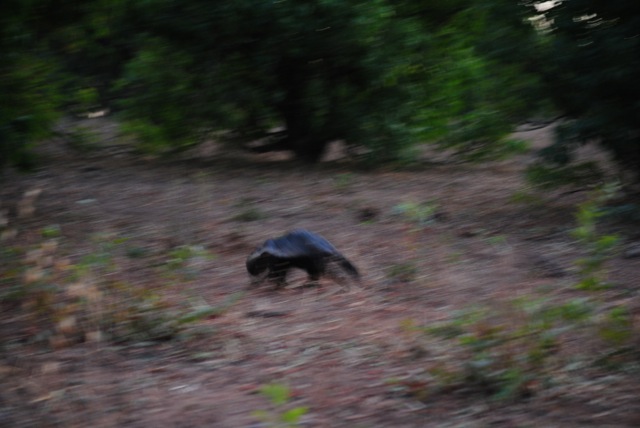
As you might remember, Marc and I had a really successful self-drive safari at Kruger National Park in South Africa, and I would have told you that self-drive safaris were the way to go. This guide-led game drive, however, was really amazing. He was connected via walkie-talkie to other guides in the park, and so he could quickly redirect us to areas where other guides had already encountered game. Also, he imparted a lot of information that really enhanced our viewing. He told us that the chirping noise the guinea fowl were making was a distress call, meaning danger was near (which was true, as the shown by the lions we encountered shortly thereafter), pointed out the breeding behavior of the impalas, and explained that the wildly leaping impalas were practicing their jumps.
After returning to our camp and taking a nap, we set off on a river cruise back into the park that afternoon. The boat departed from our lodge and cruised along the Chobe River, circling Sedudu Island, an island of five square kilometers in the middle of the river that was the subject of an intense territorial dispute between Namibia and Botswana (with Botswana ultimately prevailing), and returning just after sunset.
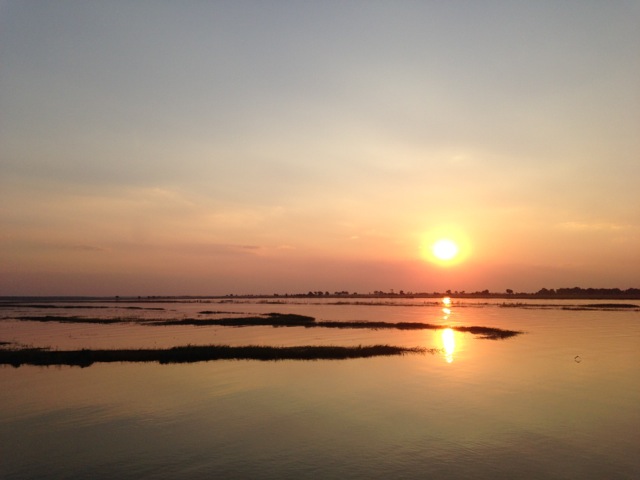
The cruise began slowly for me (I had been over African fish eagles by half-past six that morning, and I was bored as our boat loitered to look at them), but then we began to see other interesting birds: cormorants, African darters, pink-footed geese, and adorable little green bee-eaters flying in and out of an abandoned termite mound.
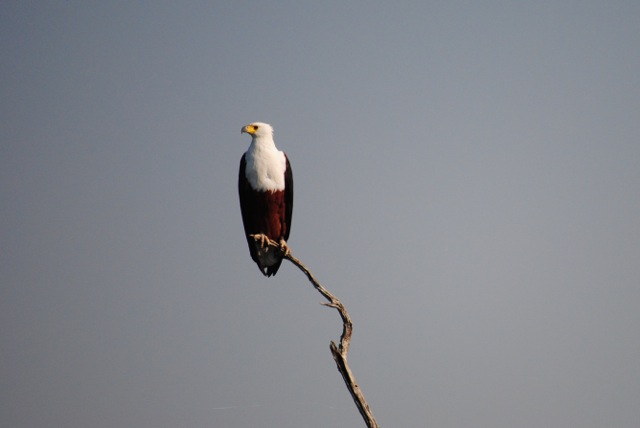
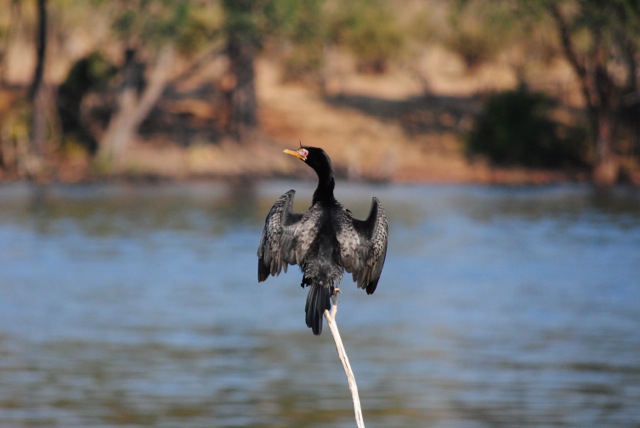
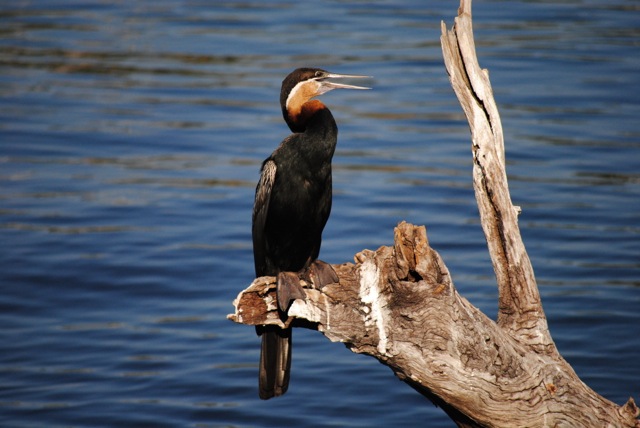
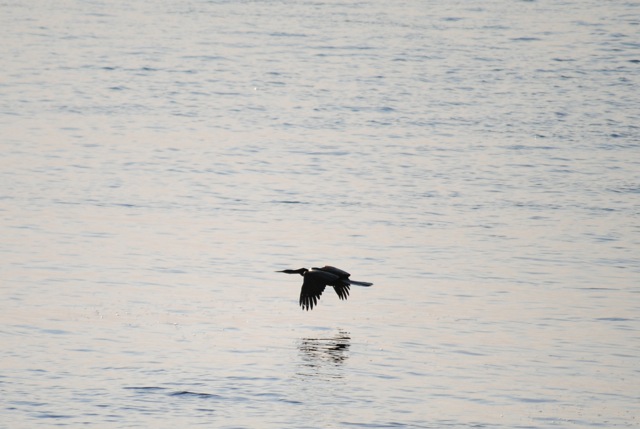
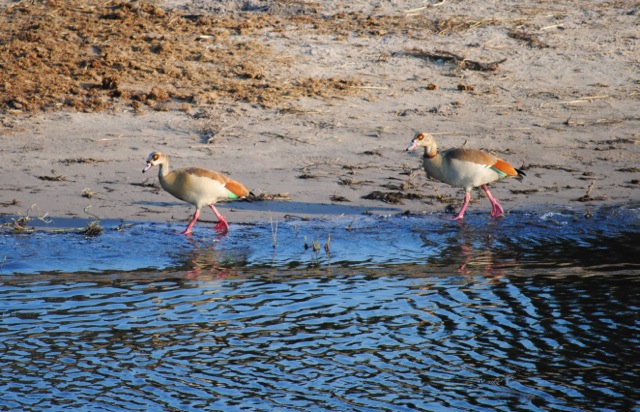
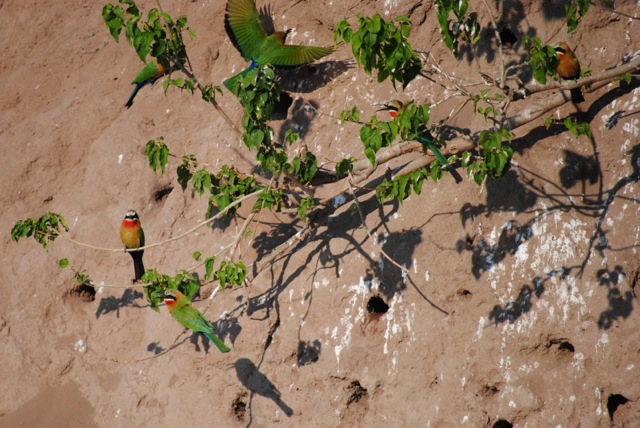
From our boat, we spotted crocodiles, monitor lizards, kudus, and buffaloes on the shore.
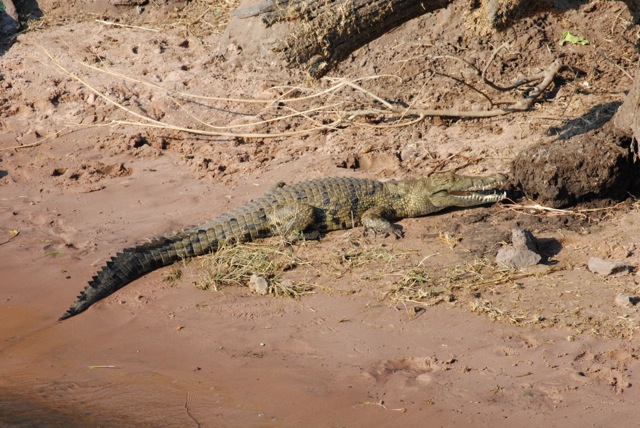
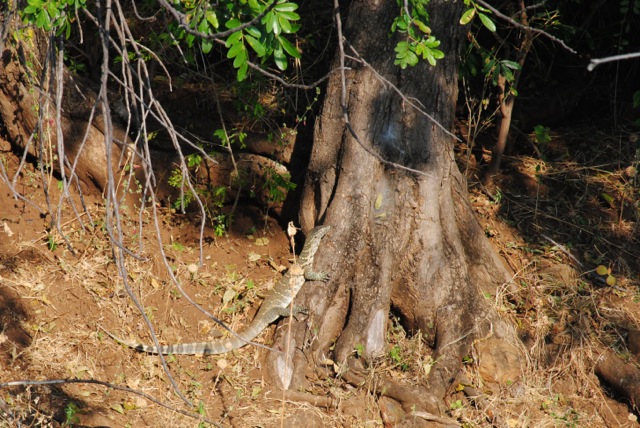
The big highlights of the cruise, however, were the many elephants we saw drinking from the river and the rafts of hippos lurking about in the water.
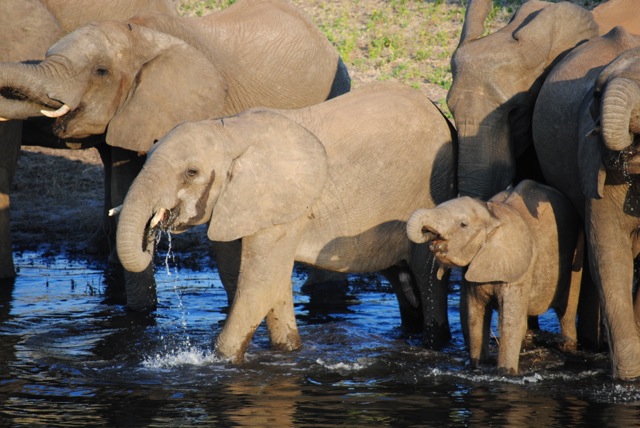
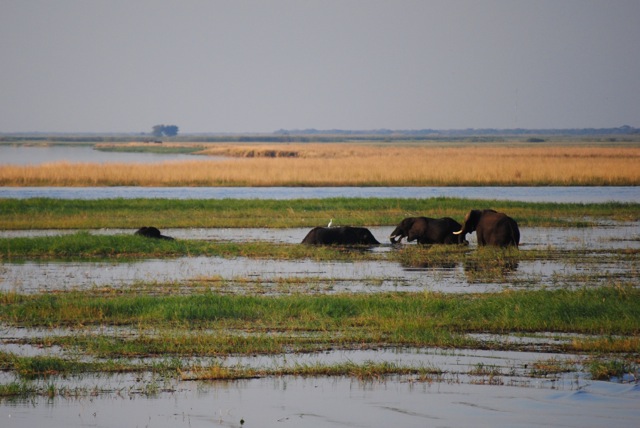
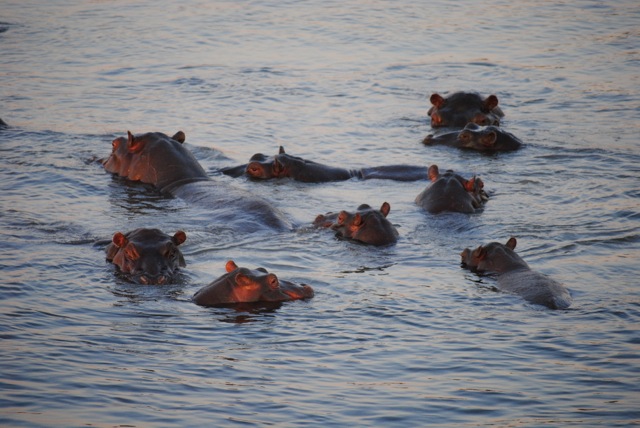
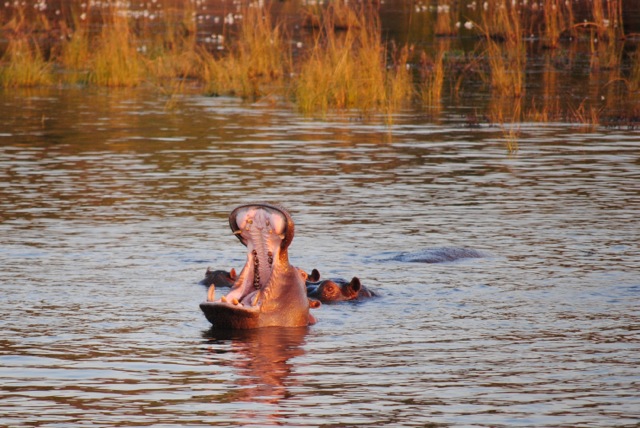
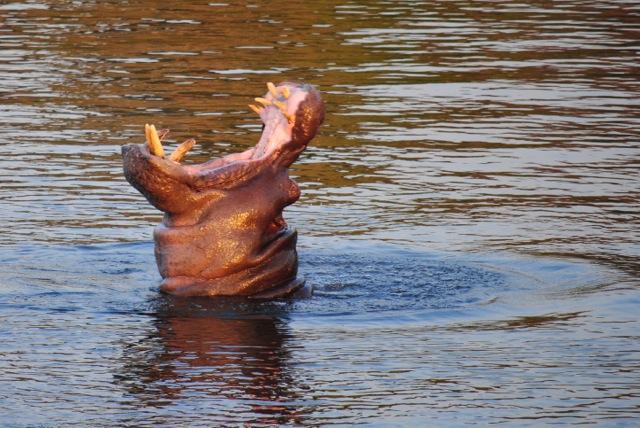
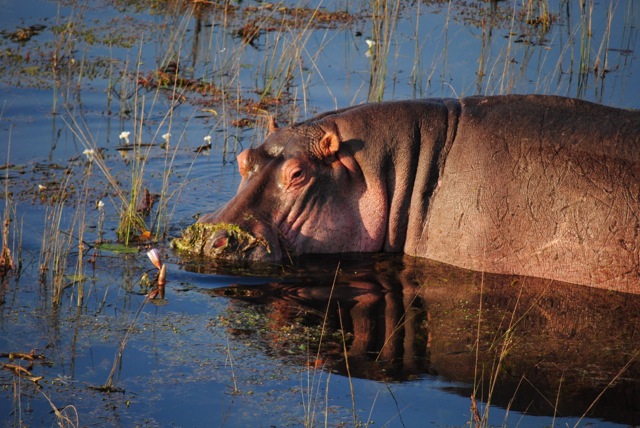
Where We Stayed:
☆ Chobe Safari Lodge. Four goats. The lodge was amazing, with a nice deck overlooking the river, real coffee, and strong wifi. Our campsite was comfortable, even though the bathrooms left something to be desired.
1 Incredibly docile warthogs, no less, as one member of our group petted the thing on its head.
2 The warning was bland and didn’t merit a picture, but it reminded me of one of my favorite signs we’ve seen while traveling. Allow me to present the sign above the crocodiles at the Dead Fish Guesthouse in Siem Reap, Cambodia:
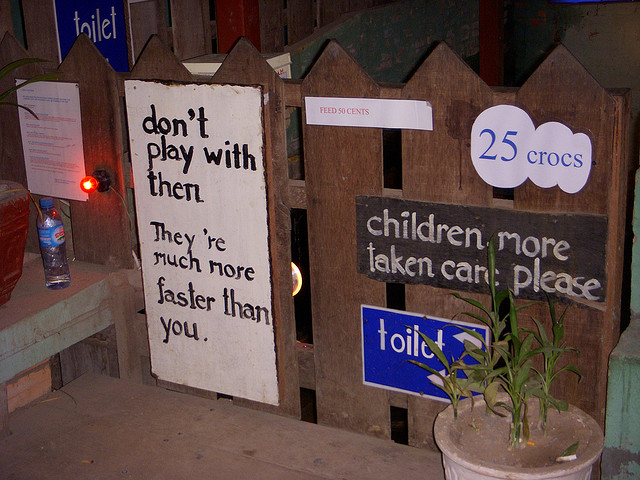
3 Despite what you might otherwise assume given the prevalence of their domesticated descendants, wild dogs are one of the most endangered and rarely spotted of Africa’s carnivores. According to Wikipedia, only 3,000-5,000 remain.
4 Not actively consuming snakes, however, as our ground hornbill had been.
5 Fun fact: a group of warthogs is called a “sound” of warthogs.
6 Another fun fact: a group of giraffes is called a “tower” of giraffes.

